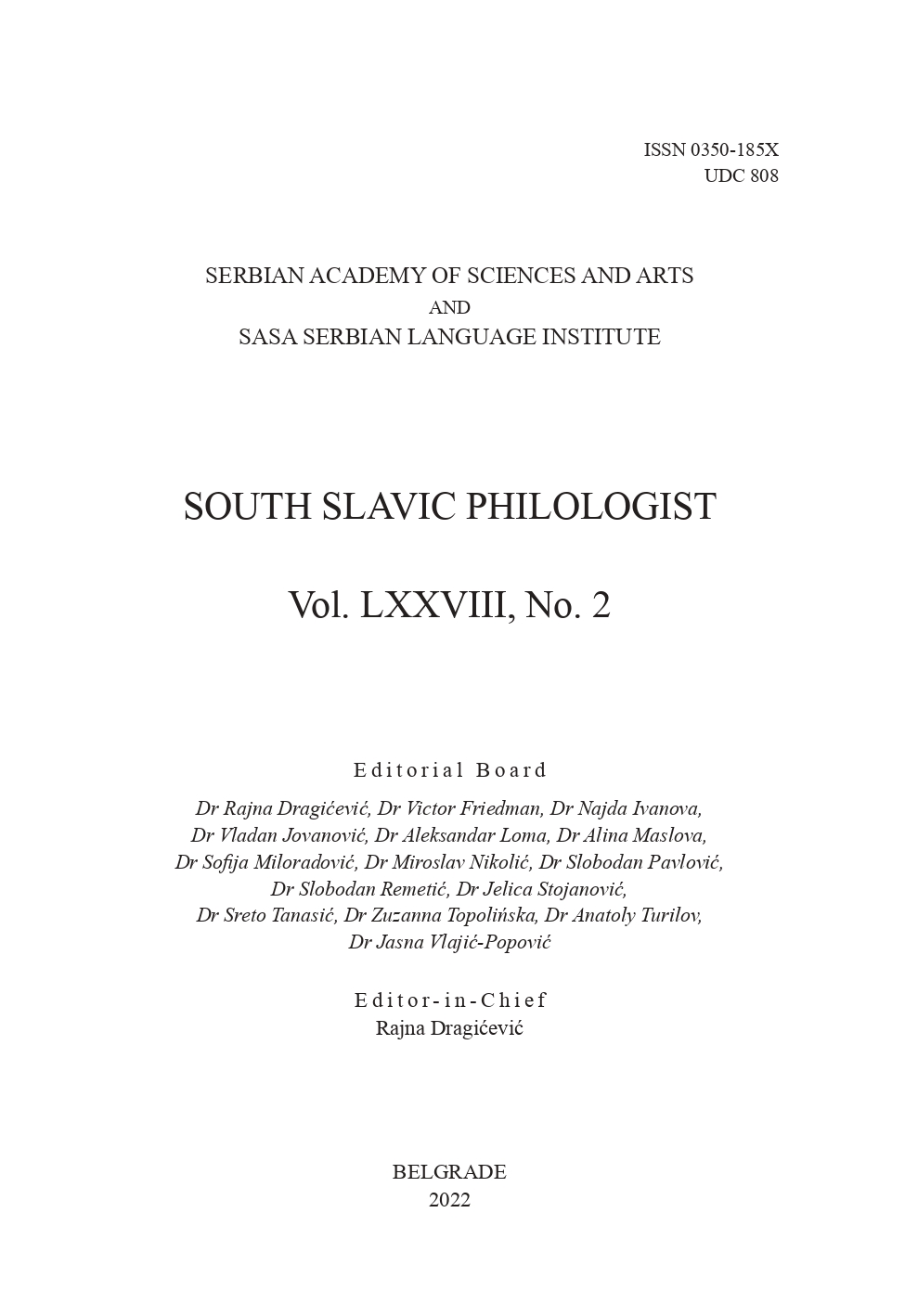ИМЕННОЙ СУБЪЕКТ ПРИ ГЛАГОЛЬНОМ СКАЗУЕМОМ В 1-М ЛИЦЕ МНОЖЕСТВЕННОГО ЧИСЛА (ОДНИ БАБЫ ЖИВЕМ)
NOMINAL SUBJECT WITH A VERB PREDICATE IN THE 1ST PERSON PLURAL (RUSSIAN ODNI BABY ZHIVEM)
Author(s): Boris Yustinivich NormanSubject(s): Lexis, South Slavic Languages
Published by: Институт за српски језик Српске академије наука и уметности
Keywords: 1st person; verb; personal pronoun; noun; plural; Bulgarian language; ellipsis
Summary/Abstract: The grammatical category of person is a powerful shifter tool: it contributes to the organization of a speech act, distributes roles among its participants and regulates their speech behaviour. Means of the category of person are primarily verbal inflections and personal pronouns. At the same time, there are relations of additional distribution between the pronouns of the 1st and 2nd person and substantives: where it is possible to use forms of the 1st and 2nd person, it is impossible to use nouns. This is the fundamental difference between the 1st and 2nd persons, which serve to designate the participants in the speech act, and the 3rd person as a “minus sign” that serves the purposes of the referential nomination. However, the material of the Slavic languages provides additional facts that require explanation. Professor Predrag Piper drew attention to Slovenian constructions in which a noun in the subject position is combined with a predicate in the form of the 1st person plural of the verb: Slovenci dobro smučamo. Similar constructions can be found in the modern Bulgarian language: Съберем се приятели, Мъжете оставахме там, А хората спяхме, etc. Rarely are such instances to be found in Russian texts: Одни бабы живем. As prerequisites and typological background for explaining these phenomena, the article considers the following grammatical features of the Slavic languages: a) personal pronoun ellipsis, b) formation of a special concept of a collective (plural) subject, c) addition of the list of hidden grammatical categories, d) weakening of syntactic links between the constituents of the sentence, e) the breadth of the meaning of the 1st person plural form.
Journal: Јужнословенски филолог
- Issue Year: 78/2022
- Issue No: 2
- Page Range: 409-421
- Page Count: 13
- Language: Russian

